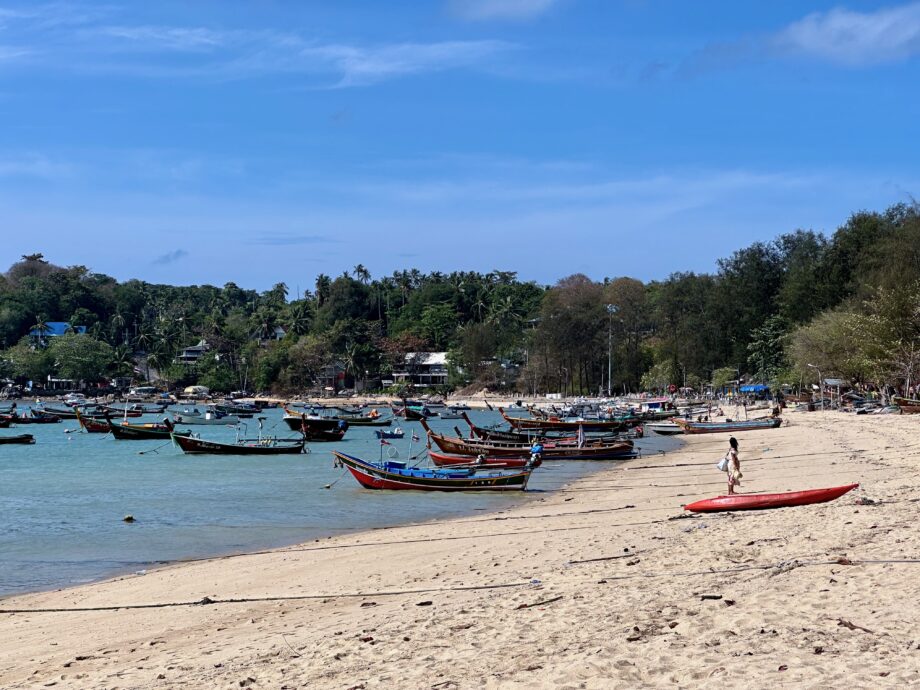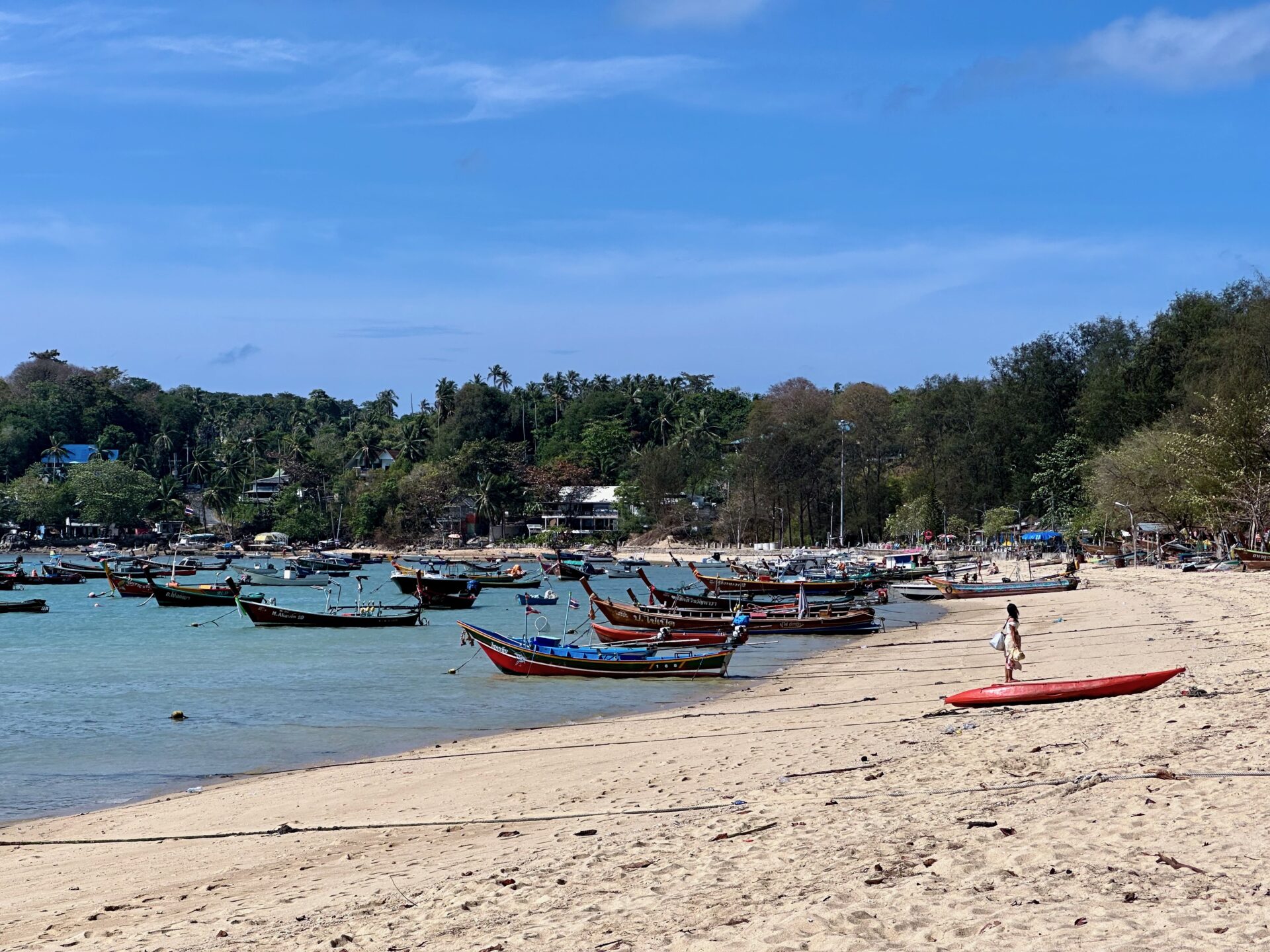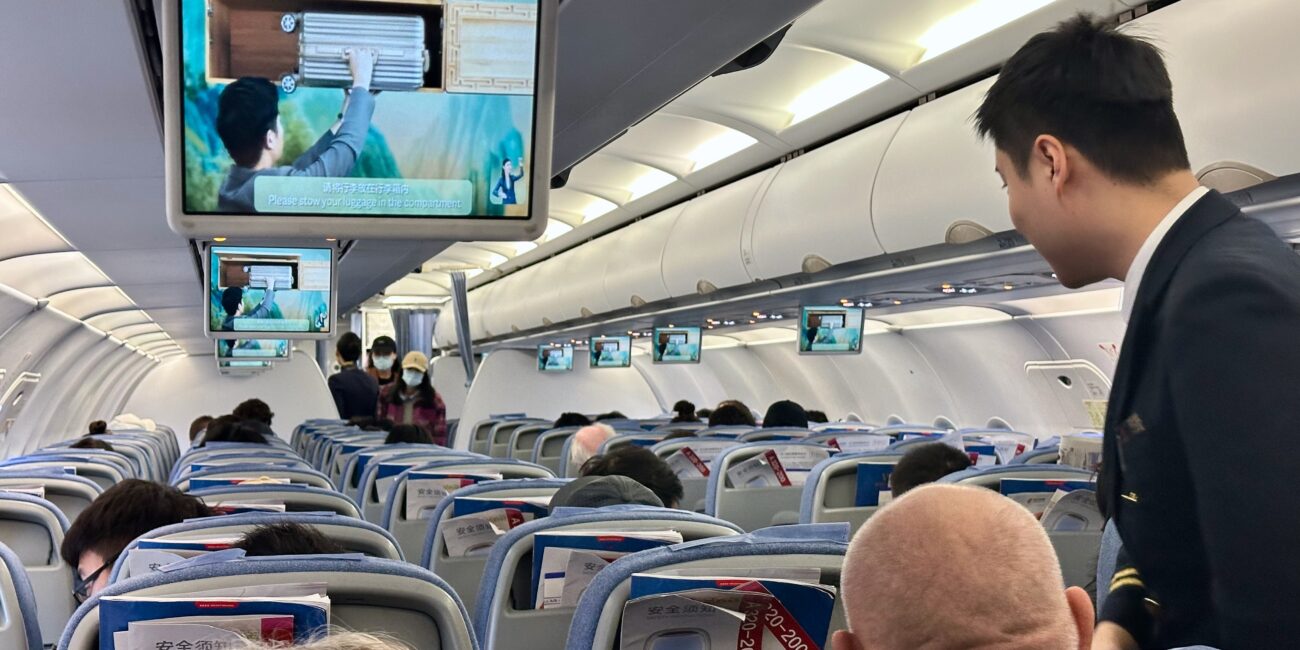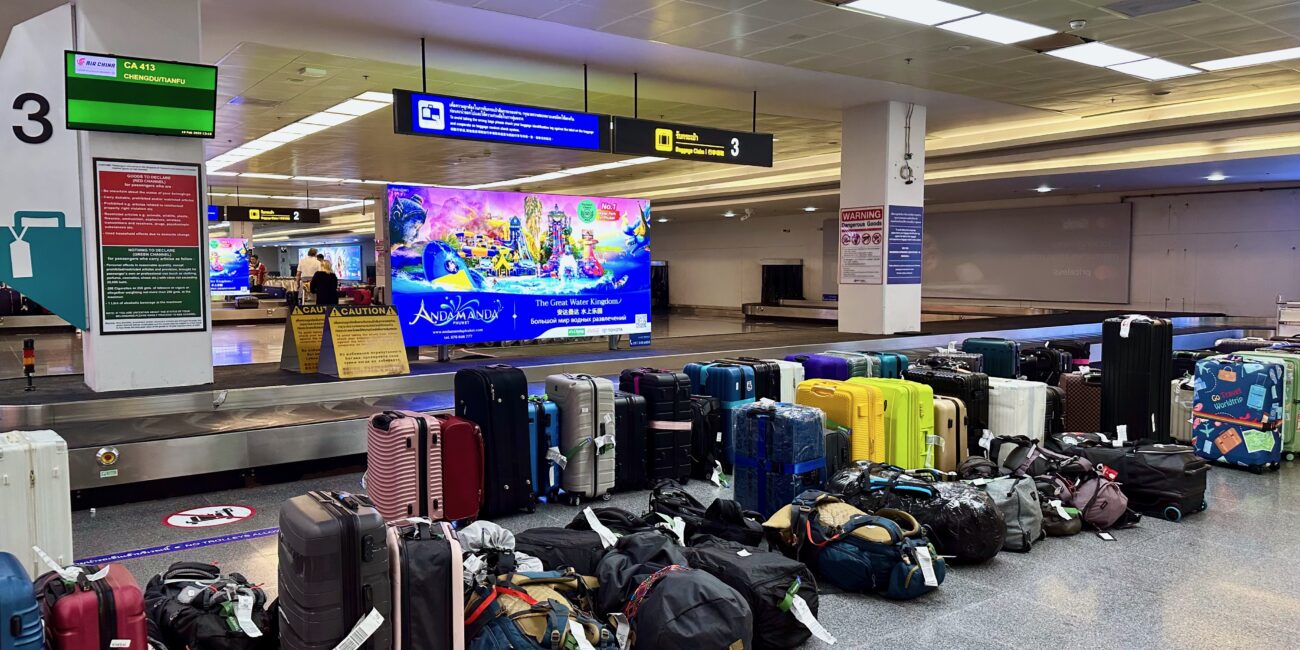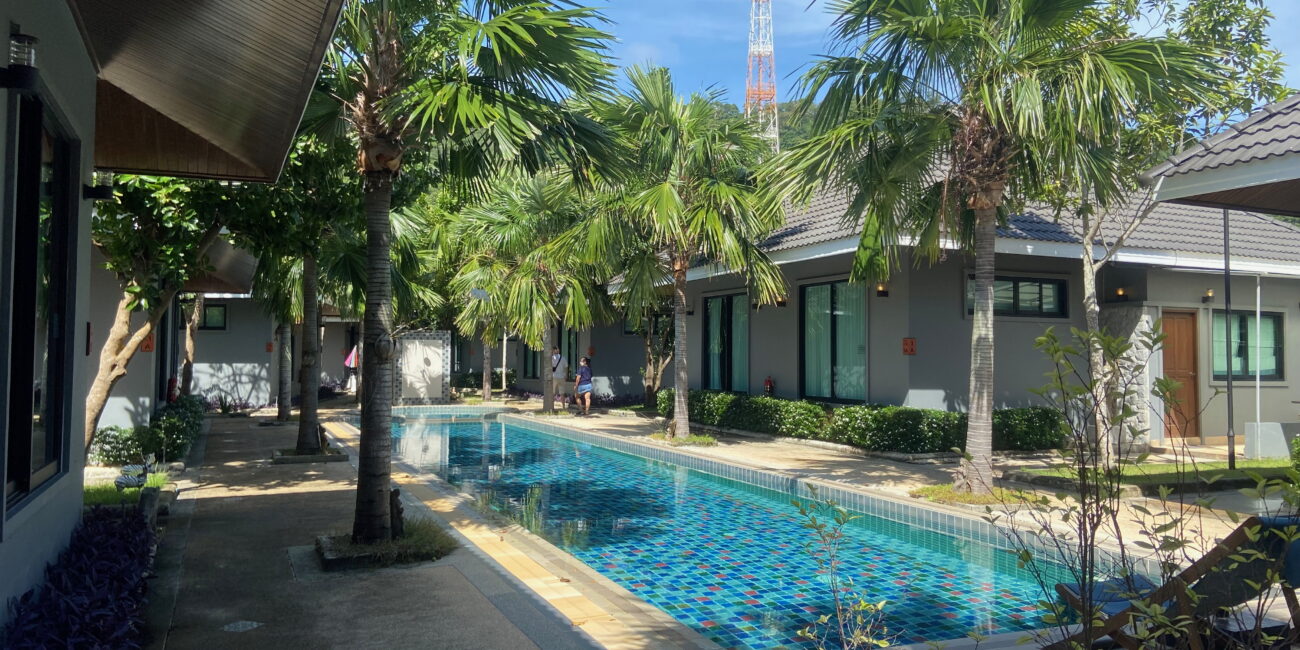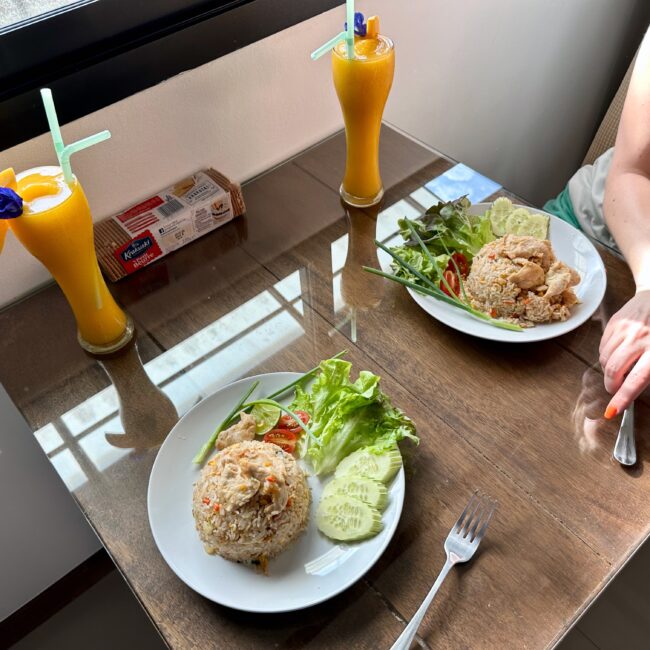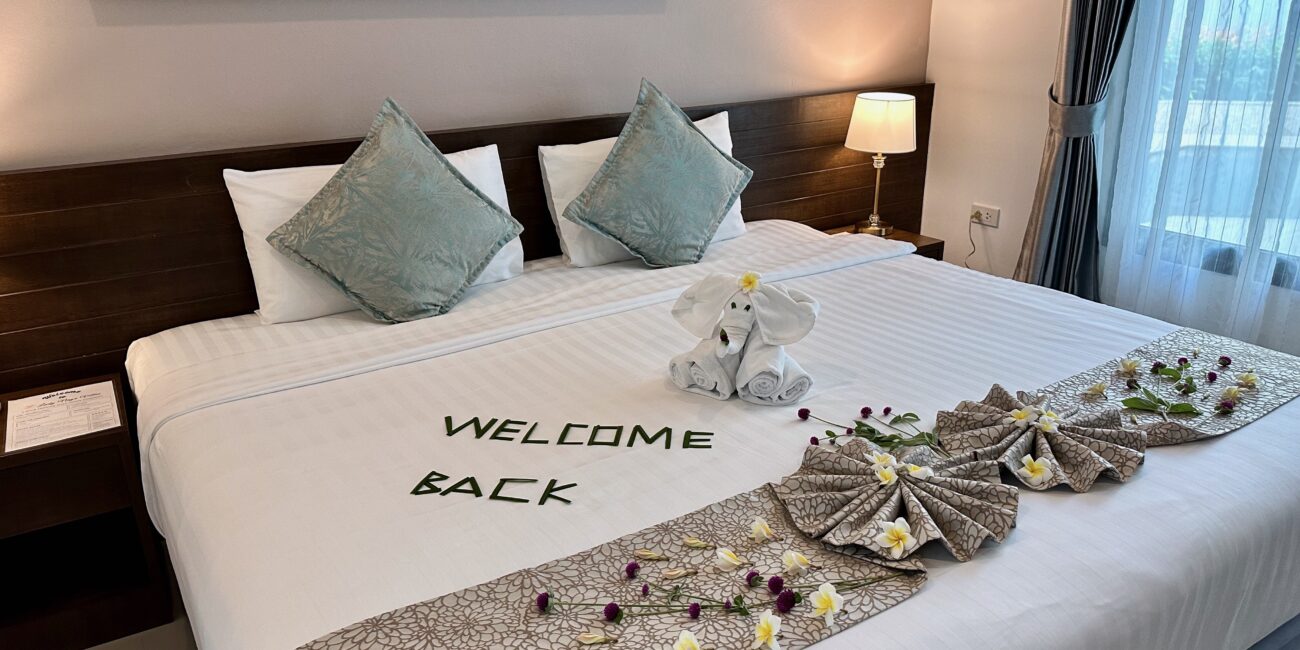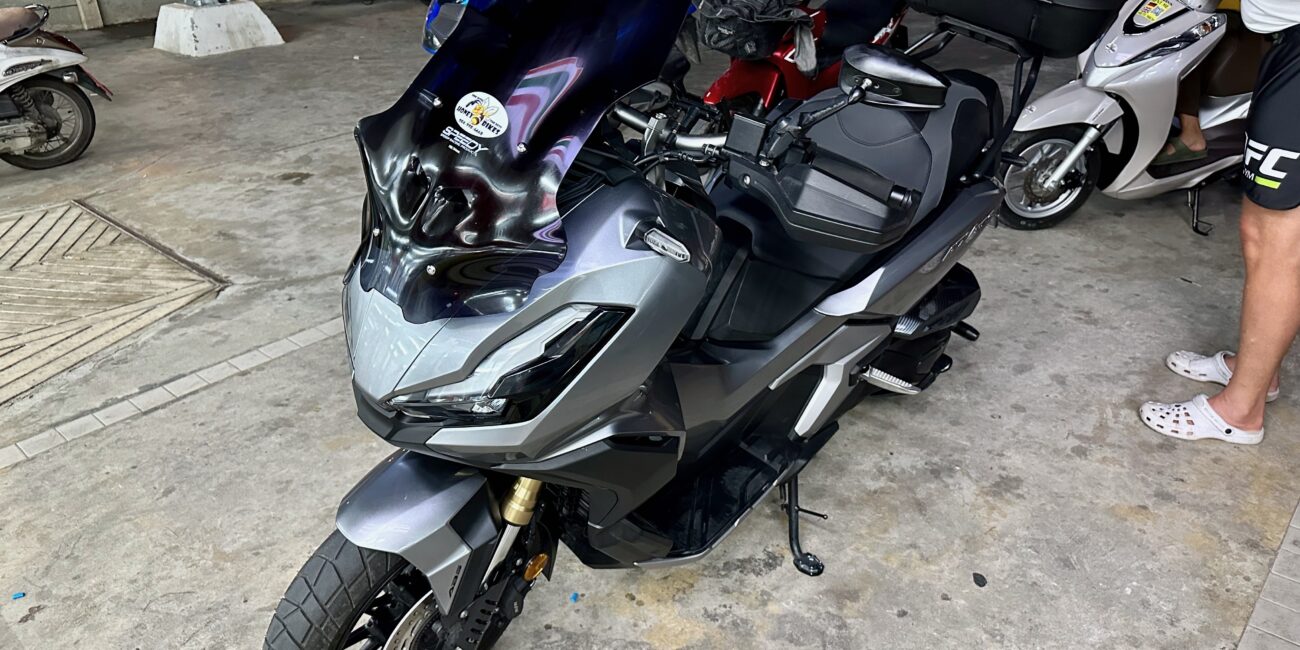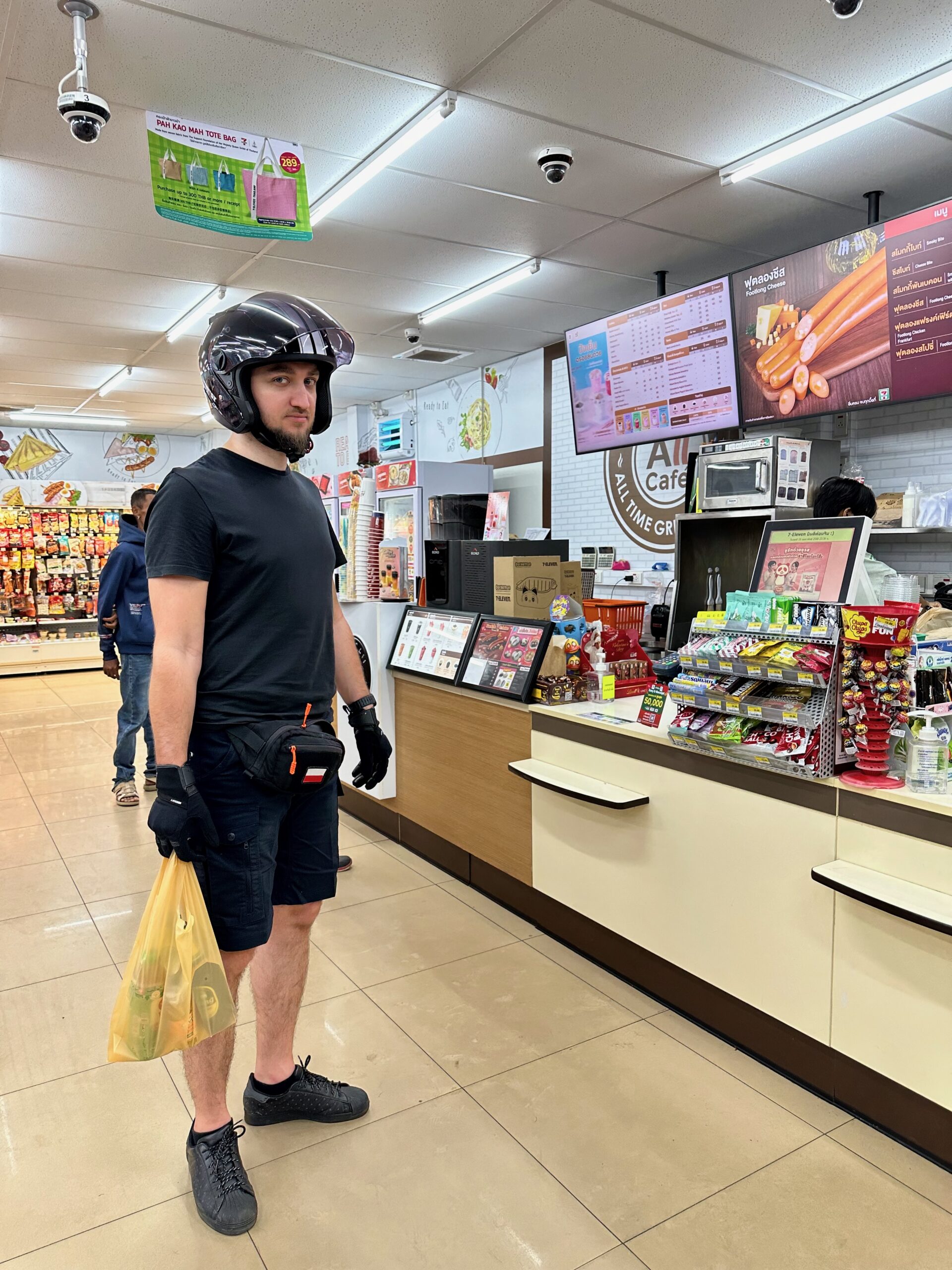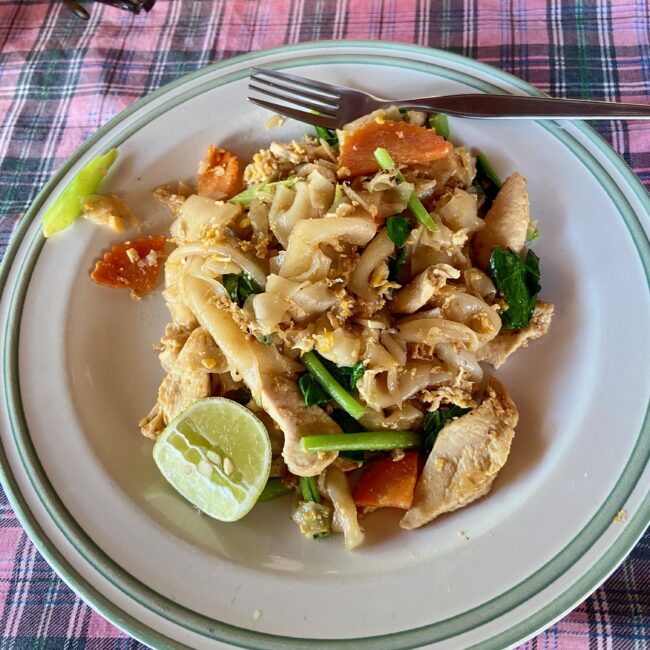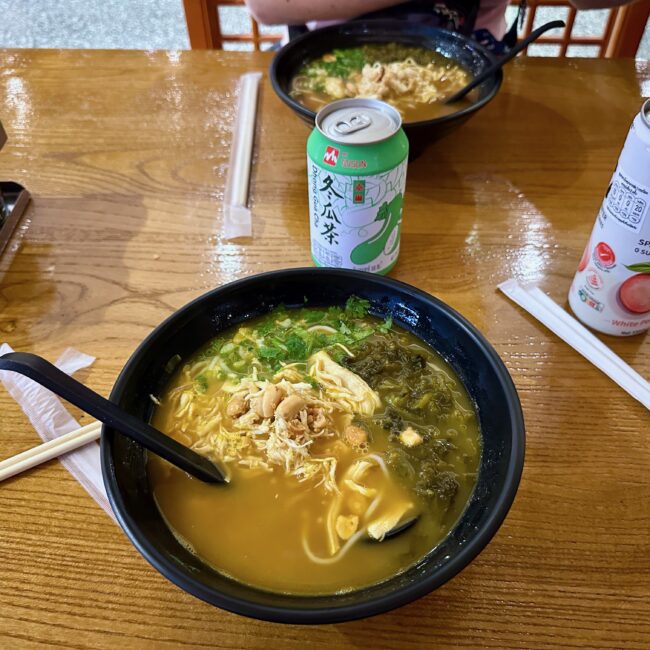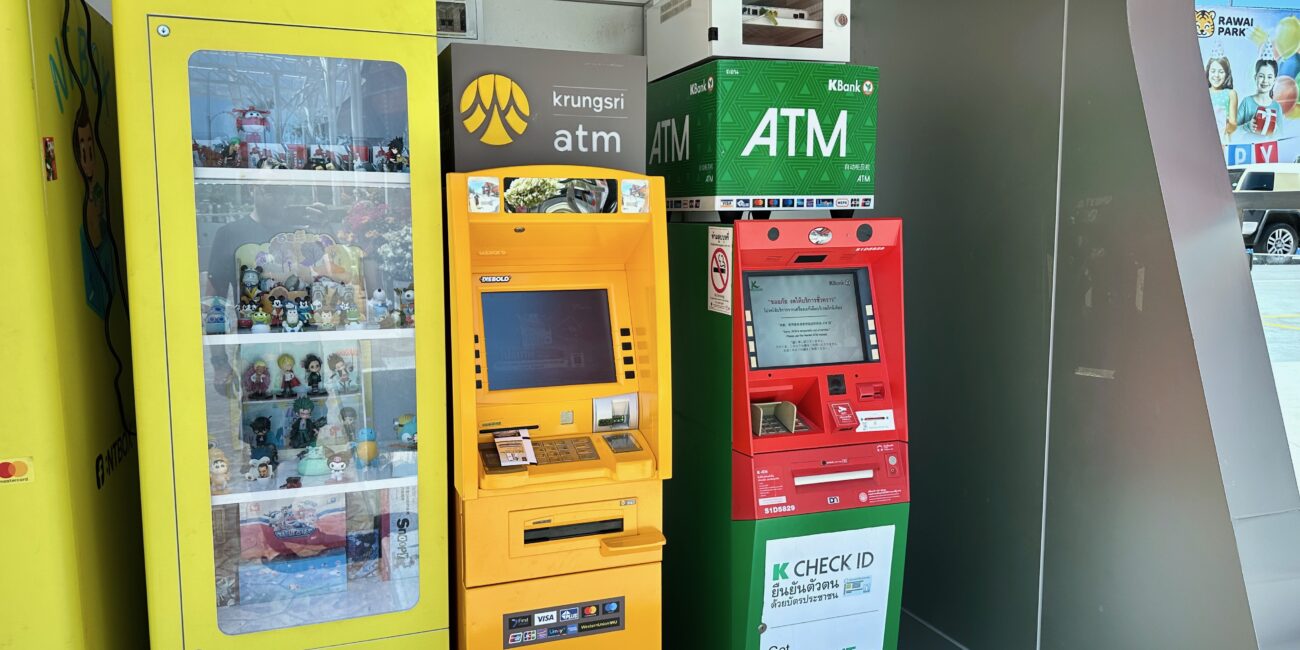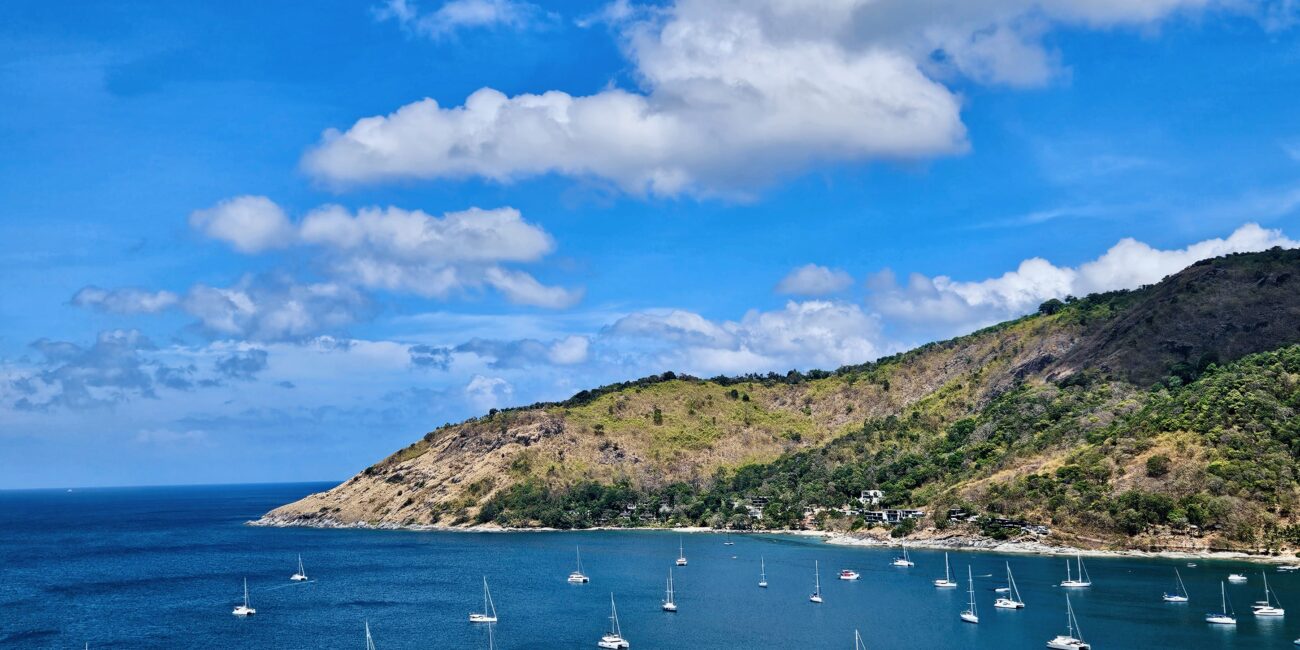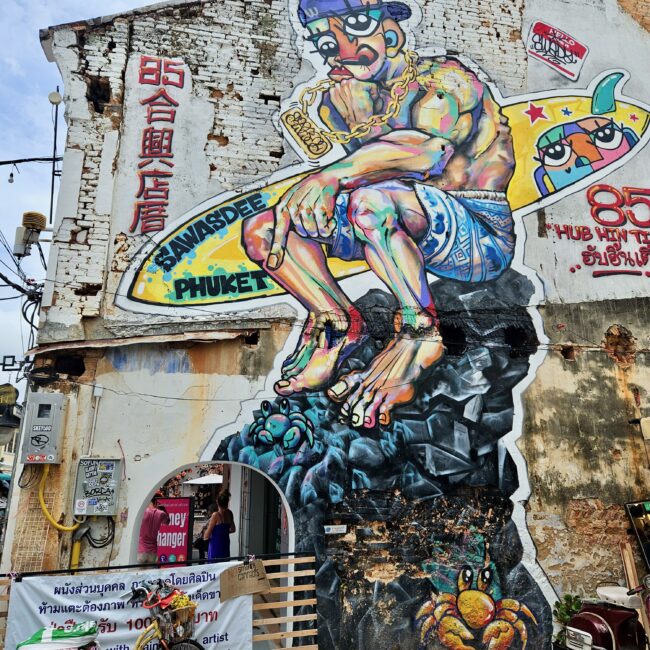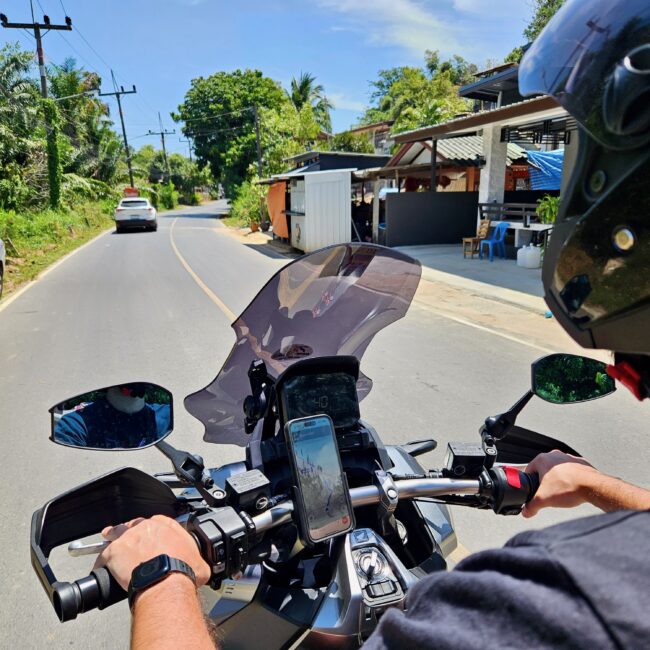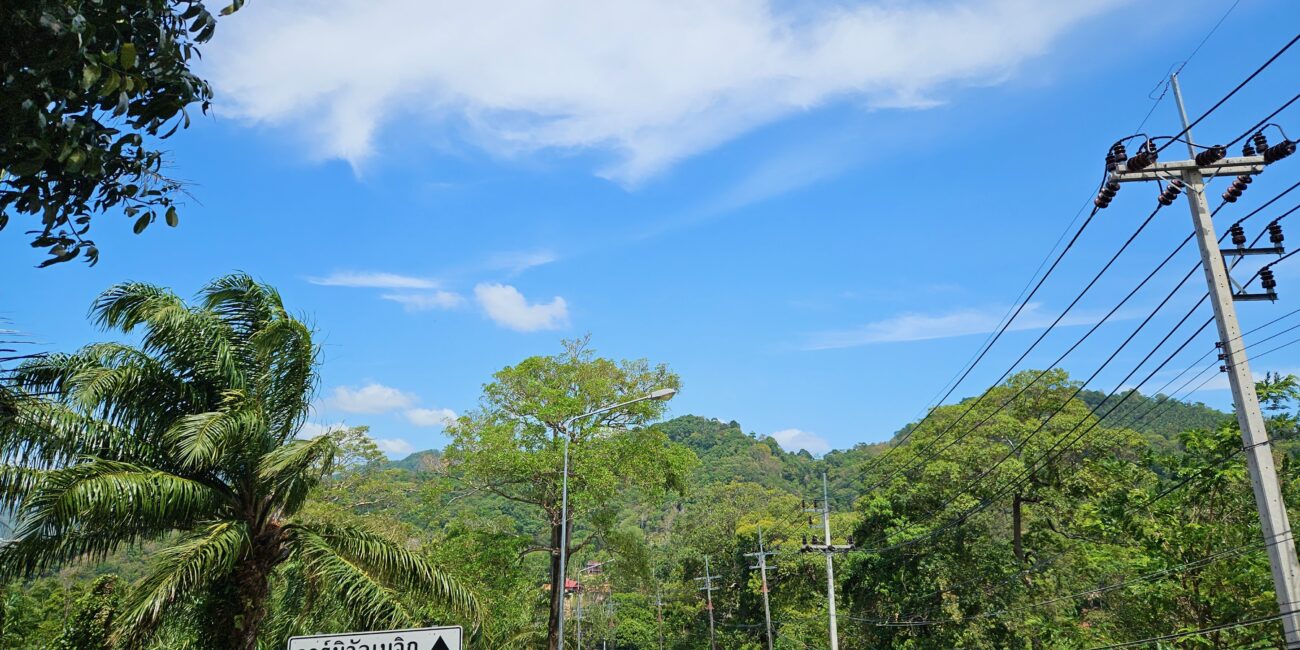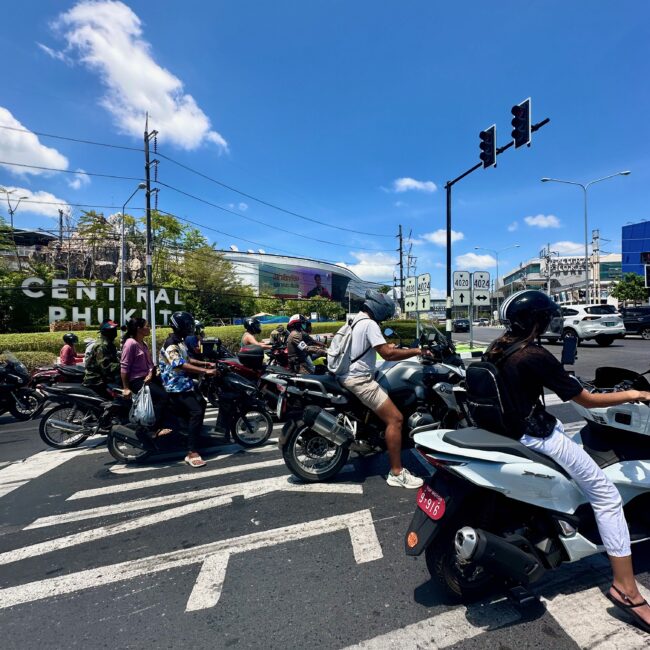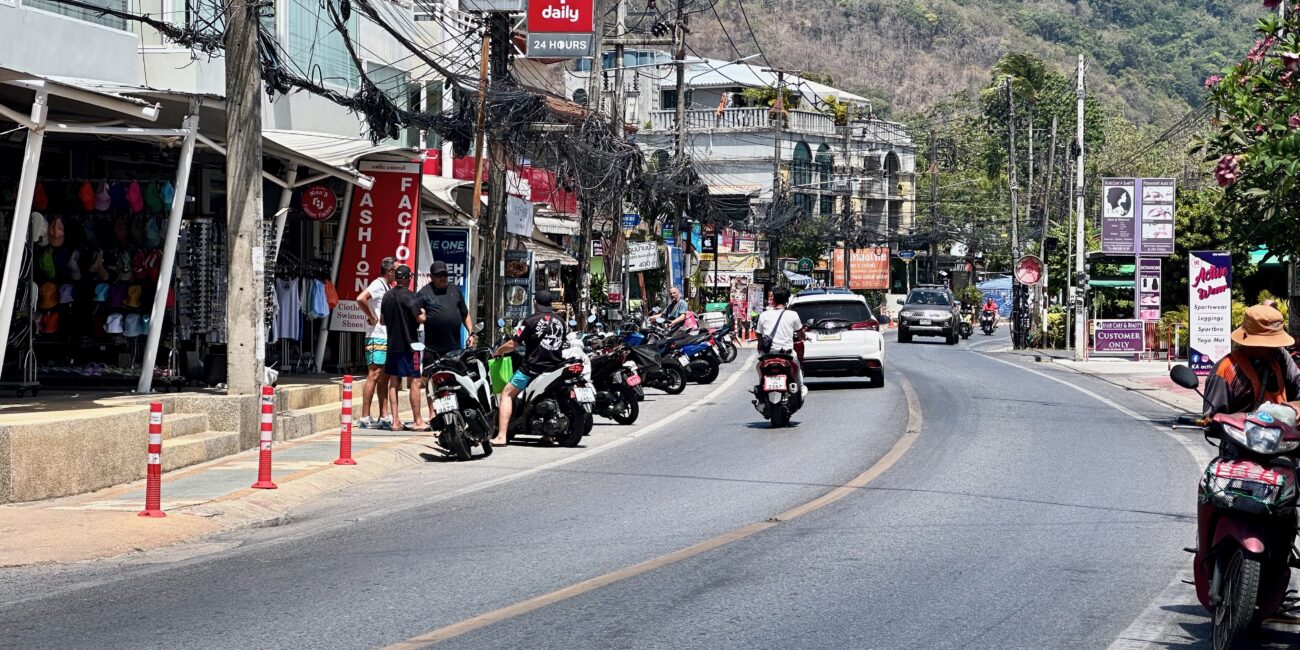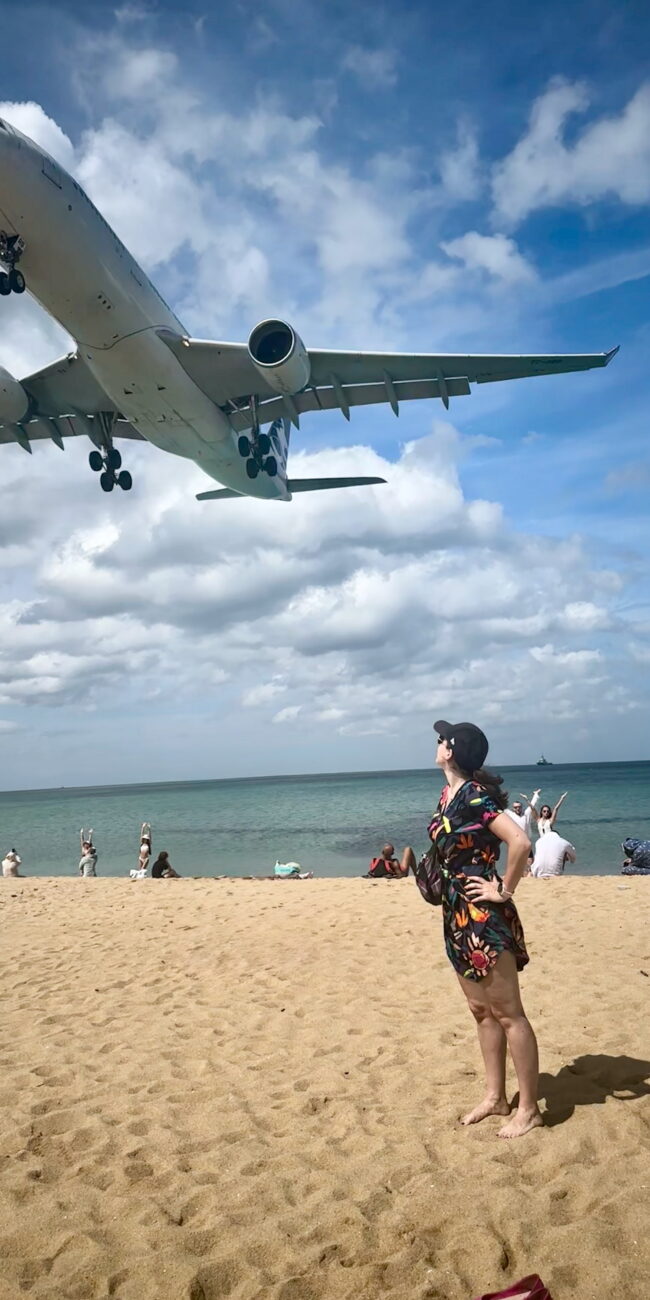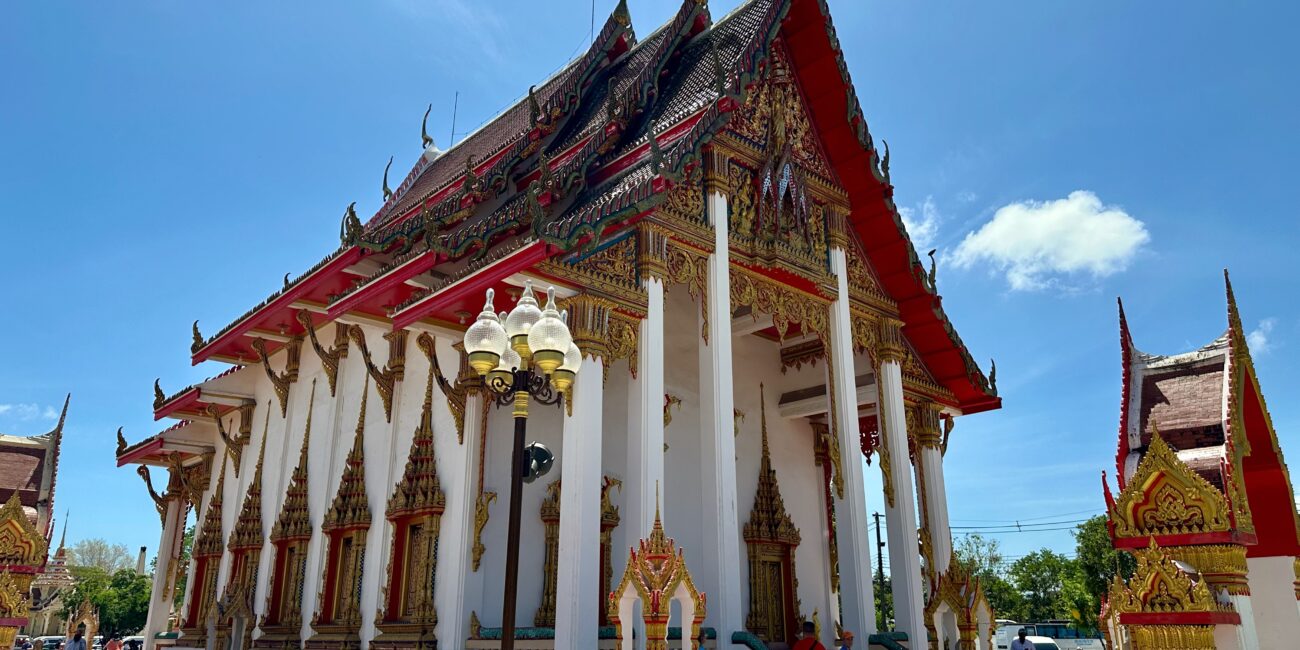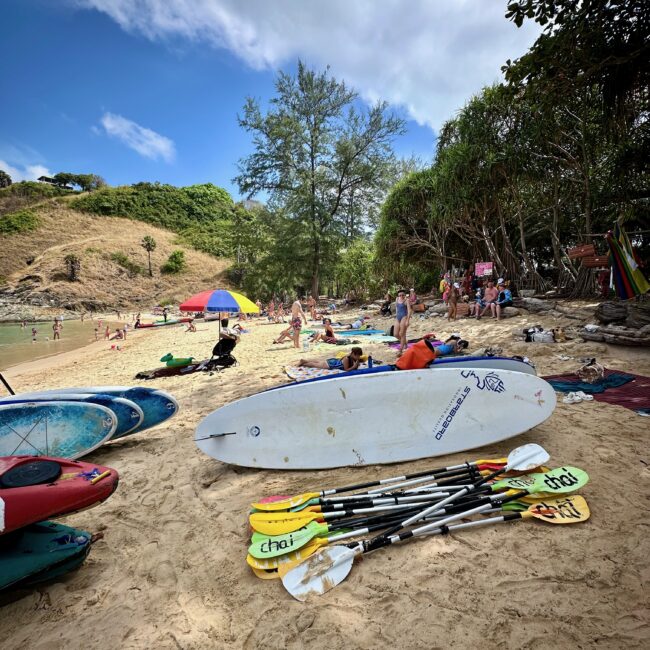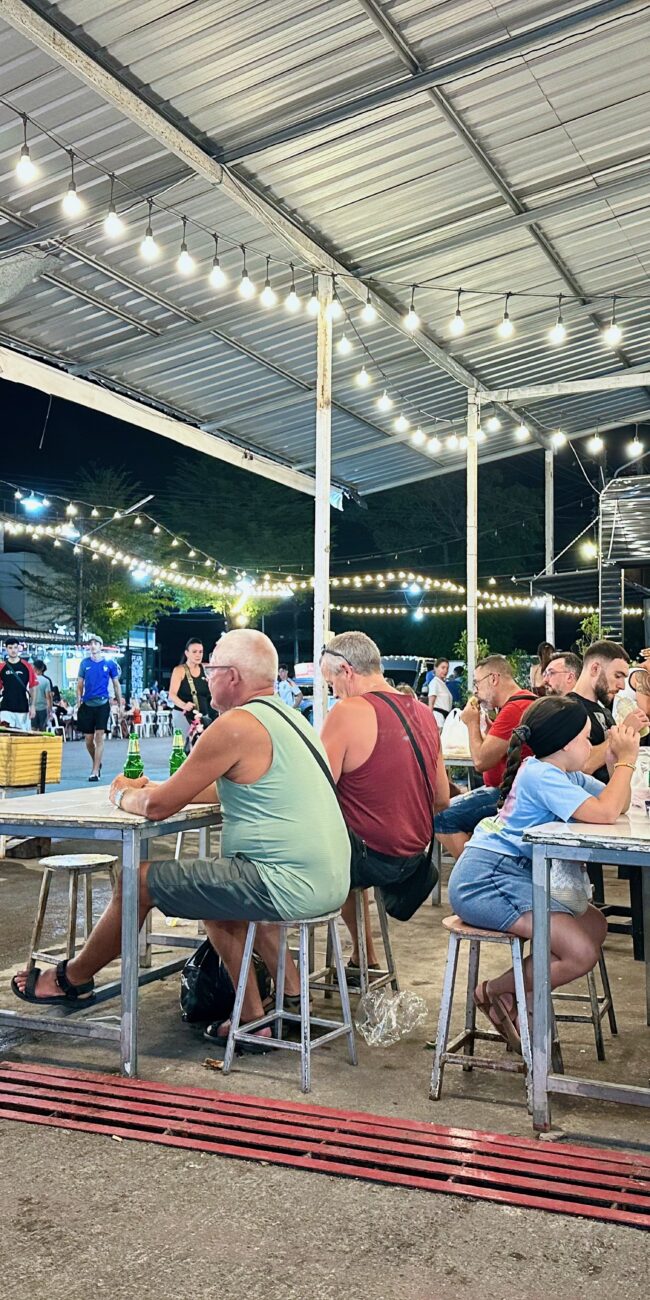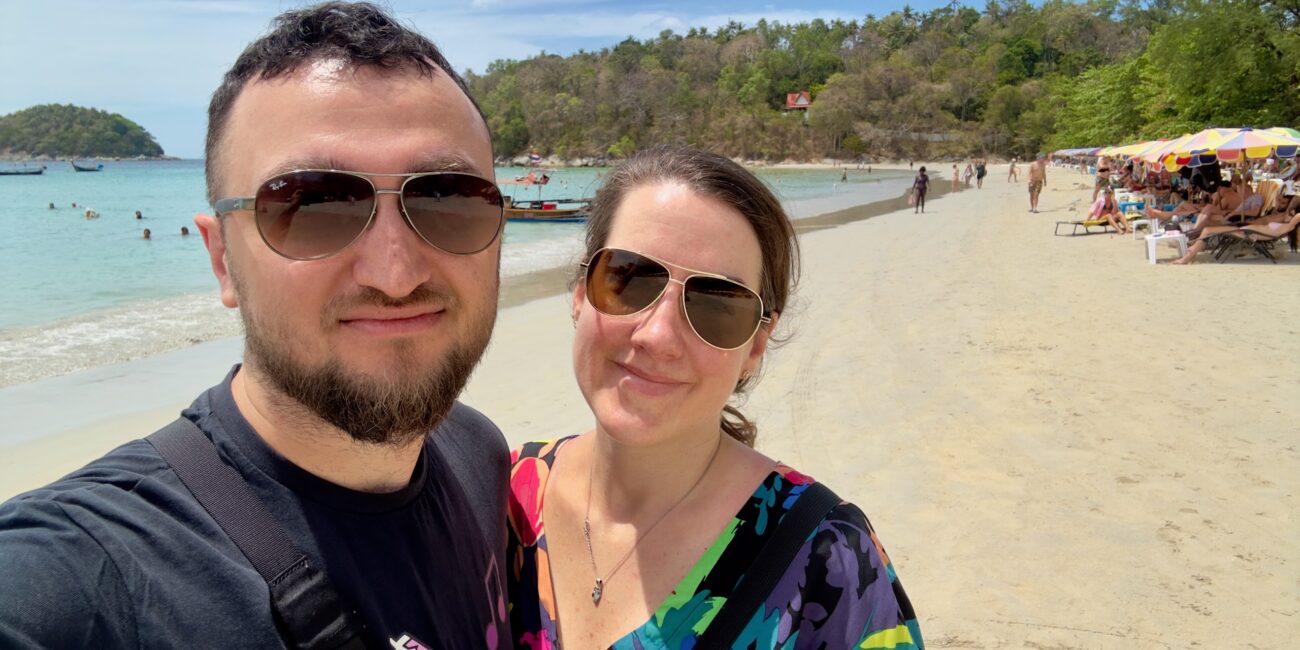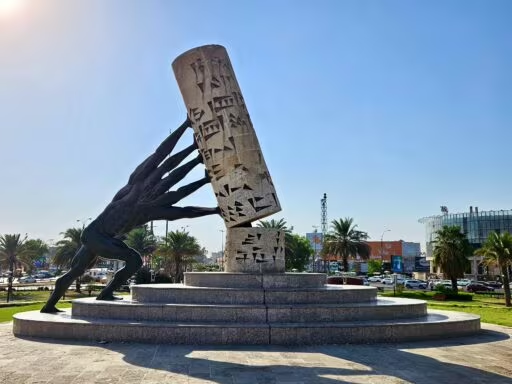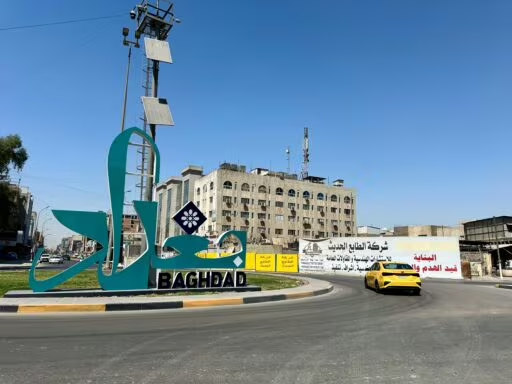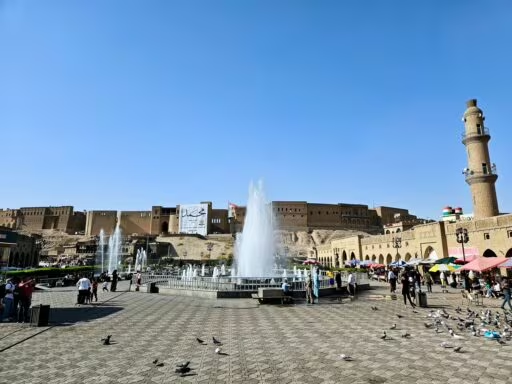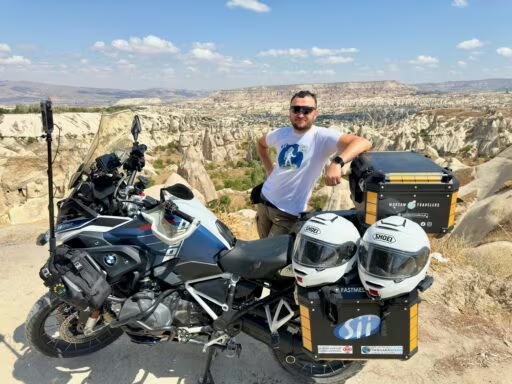This post is also available in:
Polski
Hello! 👋
Time for a little comeback to Phuket. After a few years, I decided to return to the island—this time with Jadzia—to show her what this part of Thailand is all about. The plan? A mix of exploring, remote work, and checking out how Phuket feels now—right in the middle of peak season and post-pandemic.
Back in 2021, I visited Phuket as part of the Phuket Sandbox program when Thailand was just starting to reopen for tourists after COVID. Back then, the island was almost empty. But now… well, that’s the question. Is Phuket still a tropical paradise in peak season, or has it turned into an overcrowded and overpriced resort? Time to find out for ourselves!
Where is Phuket located?
Phuket is Thailand’s largest island, located in the south of the country in the Andaman Sea. It lies near the western coast of the Malay Peninsula and is connected to the mainland by the Sarasin Bridge, making access easy. Administratively, it belongs to Phuket Province and is one of Thailand’s top tourist destinations. Thanks to Phuket International Airport (HKT), the island is well-connected to many places around the world, including Europe and various Southeast Asian countries.
Leaving China for Thailand
We chose to fly to Phuket via Chengdu, mainly because Air China had decent prices and reasonable layover times. Plus, it was a nice opportunity to make a quick stop in China—even if just for a short while. We didn’t want to overcomplicate things, so a single-stop option was simply the most convenient. Now, let’s talk about how this route played out in practice.
Stopover in Chengdu
We arrived in Chengdu just in time for some rainy weather. Despite the less-than-ideal conditions, we decided to make the most of our short stopover. Our first stop? Naturally, the panda base—one of the region’s most famous attractions. While the pandas weren’t particularly active, watching them lazily munch on bamboo up close was still a cool experience. After that, we headed to Tianfu Square, the city’s central hub, dominated by a massive statue of Mao Zedong. The square itself felt like a symbolic heart of Chengdu, though, to be honest, it was more of a place to check off the list rather than a must-see highlight.
The layover in China came with a few formalities—from thorough document checks to additional baggage screening. But we go into much more detail about that in a separate article. There, you’ll find useful tips, visa requirements, and practical advice on navigating Chengdu efficiently.
Departure to Thailand
Our flight to Phuket departed from Chengdu Tianfu International Airport, the same airport where we had landed the day before. The morning baggage check-in and security screening went smoothly—no long lines, no unnecessary hassle. The airport itself is massive but well-organized, so even with a fair amount of traffic, everything felt efficient and under control.
During our Air China flight, we ordered special meals—I went for the Hindu meal, while Jadzia chose the low-calorie option. The differences turned out to be pretty minimal—mainly that mine came with an extra sauce, which Jadzia’s was missing. Taste-wise, nothing spectacular, but at least it was something to snack on during the flight. As for the comfort, no complaints—plenty of legroom, so the journey was quite comfortable overall.
Passport check-in on Phuket
After landing at the airport, the first thing that caught our attention was the sheer number of new signs in Russian. It quickly became clear that Russian tourists now make up a huge chunk of visitors—Cyrillic signs were practically everywhere, often placed right next to the Chinese ones. Well, looks like learning English isn’t as much of a priority as one might expect…
Passport control went smoothly, and once we reached the baggage claim area, we were pleasantly surprised—our suitcases had already been taken off the carousel by airport staff and neatly lined up, waiting for us. A nice touch and a sign of well-organized service. With our eSIM already set up, we quickly ordered a Bolt to get to our hotel without any hassle.
And here comes the usual realization—we once again promised ourselves that for the next trip, we’d finally get travel backpacks instead of dragging suitcases around. But, of course, that plan somehow didn’t materialize… again. Maybe next time? 😉
Visas and documents
This time, we flew to Thailand without any special preparations—Polish citizens can stay for up to 60 days without needing a visa in advance. Just a passport, a quick stamp at the airport, and that’s it. No surprises upon arrival in Phuket either—everything went smoothly and quickly, just as expected.
It’s worth noting that Thailand recently introduced a special visa for Digital Nomads—designed for people who work remotely while traveling and often change locations every few months. If you’re planning to stay here longer while working comfortably from a café or co-working space, this could be a great option. This visa allows you to live and work legally in Thailand for an extended period, even for several years, without the hassle of renewing short-term tourist visas. So, if the idea of working from a tropical beach sounds appealing, it might be worth looking into!
For more information, check out the official Thai government website—it’s the only legitimate source for visa details and the only place where you should submit any documents for other types of visas.
Accommodation
Just like last time, we stayed at Lady Naya Villas during our stay in Phuket. The first time (back in the COVID era), I was pretty happy with it—quiet location, good conditions, and solid internet. This time, however, things weren’t quite as perfect. After my second breakfast, I made the mistake of trying the chicken noodles, and let’s just say… my stomach did not approve. I was completely out of action for the rest of the day. As a result, my appetite was pretty much gone for the next two days, and my trust in the morning breakfasts took a serious hit.
The internet, which was pretty important for us due to remote work, also turned out to be worse this time. It was there… but stability was all over the place, making it frustrating to rely on. On top of that, Phuket’s peak season prices were through the roof, so finding something bigger than a 20m² shoebox for a reasonable price was a real challenge. In the end, we decided to stick with Lady Naya Villas—mostly because of the size of the villa, but also because there weren’t many better alternatives in a sensible price range.
Traffic conditions
Getting around Phuket on a scooter is super convenient, but there are a few things you need to keep in mind. First off, Thailand has left-hand traffic, so before hopping on, make sure you’re not instinctively drifting to the right side of the road. Traffic can be pretty chaotic—local scooter riders often squeeze between cars with minimal space, cut people off, and treat traffic lights more like polite suggestions than actual rules. It’s a bit of a free-for-all, so staying alert is key.
The most important thing is having the right documents. Always carry your International Driving Permit (IDP) with you because Thai police love stopping tourists for random checks. A category B license isn’t enough—to legally ride a scooter, you need an IDP with category A. Without it, you risk a hefty fine or even bigger headaches if you get into an accident.
And then there’s the issue of accidents—unfortunately, they’re pretty common in Thailand, especially among tourists who hop on a scooter with zero experience. So, before you decide to rent one, be honest with yourself about your riding skills. Always wear a helmet (seriously, this isn’t optional), and make sure you have proper health insurance—without it, even a minor crash could end up costing you a fortune. One more thing—never leave your passport as a deposit at a rental shop. If they ask for it, walk away. It’s much safer to pay a cash deposit or use a credit card than to risk a drawn-out nightmare trying to get your passport back.
Renting a scooter
When renting a scooter in Phuket, there are a few things you should pay close attention to in order to avoid unpleasant surprises. First and foremost, inspect the scooter carefully and take photos of any existing scratches or dents before you even touch the keys. This will save you from potential arguments later about damage you didn’t cause. Also, double-check the brakes and lights before hitting the road—not every rental shop maintains their scooters properly, and you definitely don’t want to find that out the hard way.
And here’s something not everyone mentions outright: local police love targeting tourists without an International Driving Permit. Don’t assume you’ll just “get away with it”—chances are, you’ll end up paying a fine on the spot, often without any official receipt. It’s basically a “tourist tax” in disguise. Best to avoid giving them the opportunity in the first place—just make sure you have the right license.
Car rental
A car, on the other hand, isn’t the most convenient option for getting around Phuket—traffic jams are the norm, and the narrow streets can quickly test your patience. However, if you’re planning a longer road trip, like driving from Phuket to Bangkok, then renting a car starts to make a lot more sense. In that case, check out our separate article, where we break down everything you need to know about renting a car in Thailand.
SIM card
On YouTube and TikTok, you’ll often see people grabbing local SIM cards from 7-Eleven for around 199 baht. Either we had bad luck, or they were just nowhere to be found—so we didn’t waste time looking. Instead, we sorted it out before the trip and got eSIMs from our go-to provider, T-SIM.HK. No issues at all—everything worked flawlessly. The price? Around 37 PLN for 15 days and 50GB of data—not the cheapest option, but definitely convenient.
When our eSIM expired after two weeks, we found a much cheaper option on Agoda—also an eSIM, but for just around 18 PLN for a similar data package. At first, we were pretty skeptical—the price seemed too good to be true. Worst case scenario, we figured we’d just do a chargeback on the card if it turned out to be a scam. But luckily, there was no need—the eSIM worked perfectly, and we could keep using the internet without any issues.
If you are looking for other options, we also recommend:
WiFi Calling
If you want to stay in touch with Poland while in Phuket without buying a local SIM card, WiFi Calling is a great option to enable on your phone. This feature lets you make and receive regular calls over the internet, as long as you have access to a stable WiFi connection. It’s especially handy if you’re in an area with poor mobile coverage or want to avoid high roaming fees. Just make sure to check with your mobile provider before your trip to confirm that WiFi Calling is supported on your plan.
Food
We definitely weren’t lacking food options on Phuket—we mostly ordered our lunches through Grab since we were working remotely from 3 PM and needed something quick. The variety was huge—from classic Thai dishes to Indian, Japanese, and even European cuisine (though, unsurprisingly, the Western options were noticeably more expensive).
Interestingly, we ran into a strange “technical issue” on Phuket—whenever we selected cash payment in Grab, restaurants somehow never received our orders. But the moment we switched to card payment—boom, everything processed instantly. Now, as we’re writing this from Chiang Mai, we can confirm that this “issue” doesn’t exist here. As the saying goes—coincidence? I think not. 😉
And what about Thai cuisine itself? It’s all about bold flavors, fresh ingredients, spices, and intense aromas. You’ll find everything from sweet and spicy curries, coconut milk-based soups, to the famous Pad Thai and Pad Kra Pao (stir-fried meat with Thai basil). Prices for European dishes, especially in touristy restaurants, are noticeably higher than in other parts of Thailand—but still fairly reasonable compared to Western standards.
Exchange office or ATM?
In Thailand, cash is still king. Sure, you can pay by card in big supermarkets, restaurants, and hotels without any issues, but when it comes to street food stalls, markets, and small local shops—it’s cash only. So, it’s always a good idea to keep some baht on hand, especially if you plan to eat at local spots or shop at street vendors.
You basically have two options for getting cash in Thailand. You can either bring euros or dollars and exchange them at a currency exchange, or withdraw cash from an ATM using an international card. Both methods have their downsides. If you exchange currency, you’ll lose money due to double conversion (PLN to EUR/USD, then to THB). If you use an ATM, you’ll be charged a fixed fee of 220 baht per withdrawal, regardless of the amount you take out.
We personally preferred using ATMs, as we weren’t too keen on carrying a large amount of cash. There’s always a risk of losing it or having it stolen, which could quickly turn a trip into a nightmare. In the end, throughout our entire stay in Thailand, we only withdrew cash twice, so the ATM fees weren’t too painful in the grand scheme of things.
Climate and weather conditions
If you’re heading to Phuket in February, you can pretty much count on full-on sunshine—we, of course, managed to get a bit sunburnt on day one. Daytime temperatures usually hover around 32-34°C, so sunscreen is a must unless you want to spend the rest of your trip peeling. Evenings, on the other hand, are warm but not humid, making them perfect for a walk or a nice dinner out.
If you’re wondering when’s the best time to visit Phuket, the peak season runs from November to April. That’s when you get the least rain, plenty of sunshine, and calm seas—ideal conditions for a tropical getaway. Between May and October, however, it’s rainy season, which means you might get hit with heavy downpours. But on the flip side, prices drop significantly, and the beaches are way less crowded, so there are definitely some perks to visiting off-season.
Simply put—if you prefer guaranteed sunshine and don’t mind higher prices or crowds, go for the dry season. But if you’d rather save some cash and don’t mind the occasional downpour, the low season has its own advantages too.
Safety
Phuket is generally a safe place, but like anywhere, it’s always good to use common sense. We didn’t feel unsafe at any point, but there are still a few things to watch out for.
First and foremost—watch out for scams. One of the most common tricks involves jet ski rentals—you return the jet ski, and suddenly the owner claims it’s “damaged” and demands a hefty compensation. If you plan to rent anything, always take photos and record a video before using it. This way, you have proof of its condition and can avoid unnecessary disputes.
You also need to be cautious on the roads in Phuket. We’ve already mentioned scooters and how chaotic Thai traffic can be—that hasn’t changed. No helmet or reckless driving can end very badly. Scooters are a convenient way to get around, but Phuket is not the place for your first riding lesson. If you’ve never ridden one before, think twice before renting.
Petty theft isn’t a huge issue in Phuket, but in crowded areas—especially night markets and popular bars—it’s best to keep an eye on your wallet and phone. Also, don’t leave your passport lying around in your hotel room unless there’s a safe. It’s always a good idea to carry a copy with you, just in case.
And one more thing—respect for local customs. Thais take their royal family very seriously, so avoid making any careless comments about them. It’s not just frowned upon—it can actually get you in trouble. When visiting temples, remember to cover your shoulders and knees—it’s an absolute must.
Tourists from the East
Now for a slightly sensitive topic—Russian tourists. There’s no denying it—Phuket (and Thailand in general) has become a popular escape for many Russians looking to avoid reality. They’re here in large numbers, and you’ll likely run into them, especially in bars and party spots. Everyone has their own opinion on the situation, but the key thing is not to get provoked. Getting into arguments about the war, making snide remarks, or—worst case scenario—starting a fight is simply not worth it. Thai law is straightforward: if the police get involved, they won’t care who started it—both sides will end up in trouble. Trying to argue that “he threw the first punch” won’t get you anywhere. Bottom line? Avoid confrontations and save yourself the hassle.
Places we visited in Phuket
We’re not going to go on and on about every island in the area—there are already plenty of recommendations online for that. Instead, we’ll focus on the places we actually visited and the ones we think are genuinely worth seeing.
On Phuket, we mostly got around by scooter—which, despite what you might think, is actually the most convenient and budget-friendly option if you want full freedom of movement without overpaying for transport. Of course, you can also use Grab or hire a private driver, but if you go for the latter, always agree on the price upfront. Some drivers have a habit of suddenly “forgetting” the agreed amount, and magically, the fare goes up. If you run into a particularly stubborn negotiator, mentioning the tourist police usually works like a cold shower—problem solved.
And if you’re looking for a detailed list of places we think are worth visiting, check out our separate article, where we break down our top spots on Phuket.
Summary
Phuket in peak season is a completely different experience from what I had during the pandemic days. Tourists are everywhere, and mass tourism makes it hard to find a moment of peace. Back then, the atmosphere was more intimate, and the island felt more welcoming—now it’s louder, more expensive, and way more commercialized.
Jadzia liked Phuket, but we both agree that we prefer places with fewer crowds. Mass tourism isn’t just about packed beaches and traffic jams—it also changes the whole vibe, making the island feel more like a tourist machine rather than a relaxing paradise. That doesn’t mean Phuket has lost its charm—there are still beautiful spots that can truly impress. But finding them? That takes a bit more effort.
Our next stop is Chiang Mai—a place I briefly visited in 2022, but didn’t get the chance to explore properly. This time, with Jadzia, we’ll try to see as much as possible before work. No more scooter experiments here—we’re renting a car to have more freedom and make getting around way easier.

